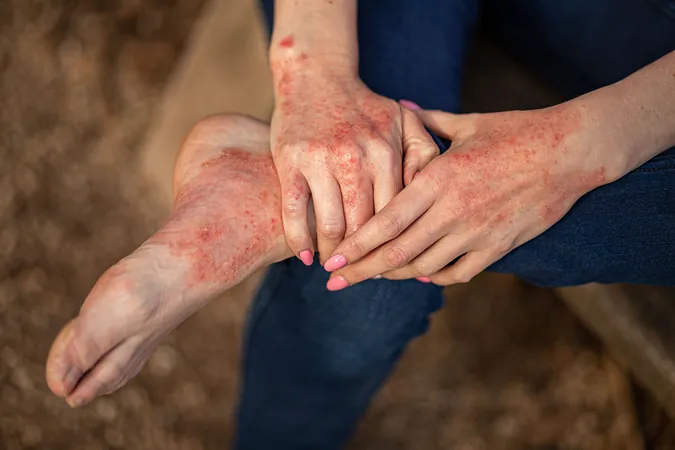
Revealing the Hidden Struggles of Adolescents with Atopic Dermatitis: A Closer Look
2025-05-22
Author: Yu
Understanding the Burden of Atopic Dermatitis (AD)
Recent findings reveal that atopic dermatitis (AD) places a substantial psychological burden on children and teens, but the factors influencing this burden vary significantly between age groups.
The Need for Better Quality of Life Outcomes
A groundbreaking study that interviewed nearly 800 young patients and caregivers highlighted the urgent need to enhance quality of life for those affected by AD. Historically, real-world data on these experiences have been sparse, making this research particularly essential.
Who’s Affected the Most?
An estimated 15% of individuals under 16 suffer from atopic dermatitis, with higher prevalence rates noted among females and Black youth. This demographic insight emphasizes the need for targeted interventions and better treatment options.
Psychological Impacts on Teens vs. Younger Kids
Adolescents reported heightened psychological distress, often feeling anxious and self-conscious—especially regarding their skin condition's impact on daily life. The detailed quality of life assessments revealed that teens faced embarrassment and challenges in their friendships, significantly affecting their well-being.
Sleep Disturbances More Common in Younger Patients
While adolescents worry more about the emotional aspects of their condition, younger children reported more sleep issues, with roughly 18% indicating significant problems. Sleep disturbances often overshadow the more well-known symptoms like itching, showcasing a different dimension of AD's impact.
What Frustrates Patients the Most?
Across age groups, itching remained the top frustration, affecting 38% of participants. Moreover, over half experienced at least one flare-up in the past year, pointing to an urgent need for effective management strategies.
Treatment Discrepancies: Kids vs. Teens
Despite 96% of patients receiving treatment, a stark difference exists between age groups. Older adolescents were more inclined to receive systemic treatments and biologics, while their younger counterparts often relied on emollients and less intensive therapies, indicating a potential gap in effective treatment for the younger demographic.
The Bottom Line: A Call for Action
This study sheds light on the unique challenges faced by pediatric and adolescent AD sufferers. Adolescents experience greater emotional and visual burdens, while younger patients contend with itching and sleep disruptions. There's a pressing need for healthcare providers to consider these factors in discussions and decisions about treatment options.
The evolving landscape of AD treatment offers hope, but it's vital that all patients—regardless of age—receive appropriate care to improve their quality of life and overall well-being.





 Brasil (PT)
Brasil (PT)
 Canada (EN)
Canada (EN)
 Chile (ES)
Chile (ES)
 Česko (CS)
Česko (CS)
 대한민국 (KO)
대한민국 (KO)
 España (ES)
España (ES)
 France (FR)
France (FR)
 Hong Kong (EN)
Hong Kong (EN)
 Italia (IT)
Italia (IT)
 日本 (JA)
日本 (JA)
 Magyarország (HU)
Magyarország (HU)
 Norge (NO)
Norge (NO)
 Polska (PL)
Polska (PL)
 Schweiz (DE)
Schweiz (DE)
 Singapore (EN)
Singapore (EN)
 Sverige (SV)
Sverige (SV)
 Suomi (FI)
Suomi (FI)
 Türkiye (TR)
Türkiye (TR)
 الإمارات العربية المتحدة (AR)
الإمارات العربية المتحدة (AR)